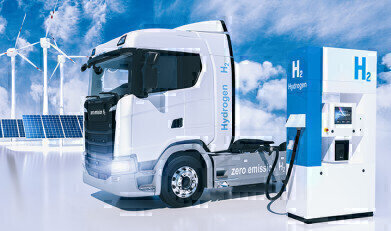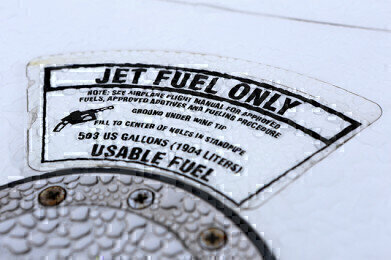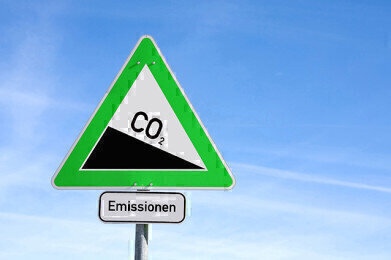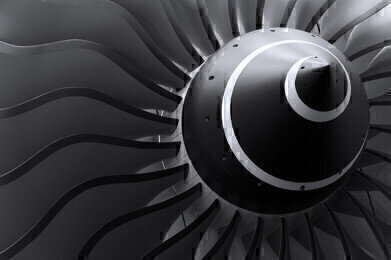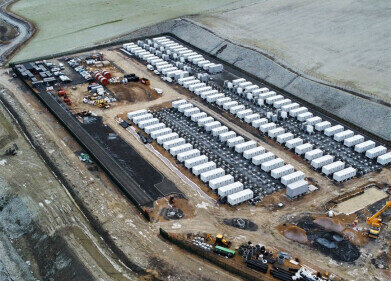Green Energy
Fuels from carbon dioxide and hydrogen
Dec 15 2020
Author credit – Stephen B. Harrison, Principal at Nexant Energy and Chemicals Advisory
The capture of carbon dioxide from refinery, power plant and chemicals production emissions will increase significantly as the world decarbonises in line with The Paris Agreement. Much of that captured carbon dioxide (CO2) will be sent underground for permanent storage in geological formations. And there will be an abundant supply for new CO2 utilisation applications.
At present, about 80% of the CO2 captured globally is used for enhanced oil recovery (EOR) and much of that is related to the US upstream sector. The amount of CO2 used for EOR dwarfs the amount of captured CO2 that is routed to other applications in the food and beverage industry for food freezing and beverage carbonation or for welding of steel and pH control in water treatment. To consume a significant amount of CO2 that will become available as new carbon capture schemes come on stream, the new applications for CO2 will need to be high-demand utilisation cases.
The production of synthetic e-fuels from steam and CO2 on solid oxide electrolysers (SOE) has the potential to become a significant consumer of CO2. Similarly, the electrochemical conversion of CO2 can yield polymers and plastics. These emerging applications have realistic prospects of becoming major CO2 consumers in the future. In each case, renewable electricity and the SOE combine to play a role displacing crude oil or other fossil fuels in the respective value chains.
Solid oxide electrolysers hold the key to synthetic e-fuels
A Solid Oxide Electrolyser (SOE) consumes water in the form of steam and derives a significant percentage of its energy from the heat of the steam. This means that approximately one third less electrical power is required to produce hydrogen, compared to a polymer electrolyte membrane (PEM) electrolyser or an alkaline electrolyte cell (AEC) system.
Notably, SOE electrolysis also has high potential in a diverse range of Power-to-liquids applications because it can either be configured to produce syngas when fed with a mixture of steam and CO2.. Syngas is a mixture of carbon monoxide and hydrogen which can be converted to hydrocarbon fuels using the Fischer-Tropsch process. The resultant liquid hydrocarbons are known as synthetic e-fuels The SOE can also integrate seamlessly to produce feedstocks for chemical processes.
Carbon dioxide and hydrogen make methanol as a marine fuel
Methanol is used as a marine fuel on several ships. The route to methanol production is though syngas. Here, again, an SOE fed with CO2 and steam holds the key to ‘green’ methanol production. However, the electricity flowing to the electrolyser must be from a renewable source for the syngas and methanol to justify wearing the ‘green’ badge.
Ammonia is also receiving a lot of attention as a potential marine fuel. It can either be used as a fuel in a pure form or it can be blended with diesel. In these cases, it respectively enables zero, or reduced CO2 emissions form the ship. If the ammonia is produced from green hydrogen on an electrolyser fed with renewable power or from natural gas on steam methane reformers fitted with carbon capture and storage systems, the use of ammonia as a maritime fuel will indeed support decarbonisation.
Methanol and ammonia can easily be stored as liquid fuels on ships. However, ammonia vaporises easily to form a highly toxic gas and methanol is less volatile and the vapours are less toxic. This argument favours the use of methanol. On the other hand, ammonia combustion yields no CO2 emissions, whereas methanol burns to form CO2. Here the advantage swings to ammonia. As with the debate about decarbonising aviation fuels, there are many potential fuel options to decarbonise shipping.
Carbon neutral aviation from hydrogen and carbon dioxide
Significant high pressure compressed hydrogen fuelling station infrastructure is being built to enable Hydrogen to be used as one of the fuels to decarbonise heavy duty mobility applications such as buses and trucks. However, the optimum fuel to decarbonise aviation cost-effectively is less clear.
Biofuels are already used as an alternative to crude-oil as jet fuel. Despite their CO2 emissions during combustion, they are regarded as carbon neutral because the growth of the crop extracted CO2 from the atmosphere. Synthetic e-fuels produced using renewable power, steam, CO2 and the magic of electrochemistry on the SOE followed by the Fischer-Tropsch process would be an alternative to biofuels. These liquid fuels would be drop-in replacements for jet fuel derived from crude oil and have a very high energy density. Energy density is the key criteria in intercontinental aviation, meaning that jets could achieve high range with a high number of paying passengers.
Events
Apr 22 2024 Hannover, Germany
Apr 23 2024 Kuala Lumpur, Malaysia
Apr 24 2024 Sao Paulo, Brasil
May 05 2024 Seville, Spain
May 13 2024 Munich, Germany
